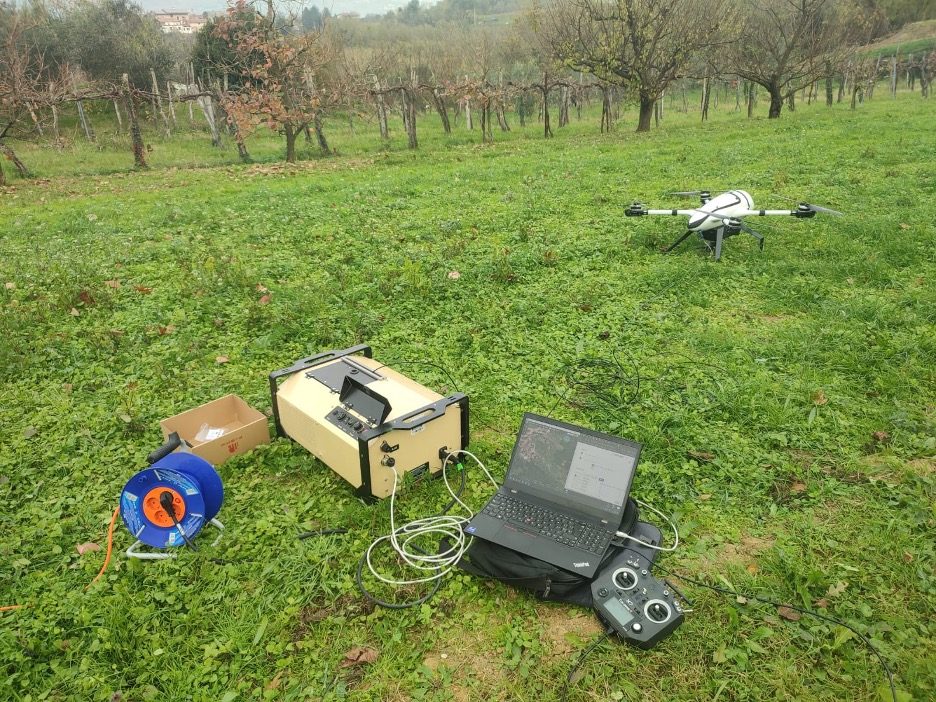New Feature Expands Applications for Defense, Public Safety, and More
Eurolink Systems has added a tethered solution to its Beluga mini-drone, expanding its use for defense, law enforcement, public safety, and other critical applications.
Tethered Drones: A Long History of Use
Since 2013, Eurolink Systems has developed various tethered drone capabilities. One such system, the “Cobra,” was mounted on a General Dynamics Cougar 4×4 and deployed by the Italian Army. This technology enhanced situational awareness for military convoys by compensating for the limited visibility of armored vehicles.
Beluga Mini-Drone: Designed for Harsh Environments
The Beluga mini-drone is built for flexibility and resilience. It operates in extreme temperatures ranging from -25°C to 55°C and withstands lateral winds of up to 45 km/h. The drone is IP67-compliant, meaning it is dust-tight and water-resistant. Additionally, Beluga can take off and land on water, making it useful for maritime applications.
The platform supports variable payload capacities, carrying up to 1.5 kg for 60 minutes or heavier loads for shorter durations. Eurolink Systems notes that Beluga was designed to be “Chinese component-free” in line with U.S. Department of Defense (DoD) and Defense Innovation Unit (DIU) BLUE UAS security guidelines.
Expanding Beluga with a Tethered Capability
The new tethered capability, now formally named Beluga-T, adds advantages such as increased flight stability and risk reduction. According to Eurolink Systems, this feature allows the drone to operate in GPS-denied environments and withstand challenging weather conditions.
One of the main benefits of the tethered solution is providing an “eye in the sky” in restricted areas. The tethered drone can serve as a communication repeater or surveillance tool, making it valuable for military, law enforcement, and emergency response teams. Eurolink Systems highlights that Beluga-T can be fully operational within two minutes and does not require a trained pilot.
Key Applications of Beluga-T
The tethered Beluga-T can be used in various sectors, including:
- Military intelligence, surveillance, and reconnaissance (ISR)
- Artillery support and nuclear, biological, chemical, and radiological (NBCR) detection
- Law enforcement operations
- Counter-UAS missions
- Communication network extension
- Border and perimeter security
- Disaster response and recovery
- Atmospheric data collection
- Journalism and cinematography
- Environmental monitoring
- Precision agriculture
Technical Specifications of Beluga-T
Beluga-T is designed for extended operations with the following features:
- Payload capacity: Up to 3-4 kg
- Maximum height: 100 meters
- Endurance: Unlimited (as long as power is supplied)
- Maximum towed speed: 20 km/h for convoy escort
The drone retains the rapid deployment capability of the Beluga family, becoming airborne within two minutes.
Fail-Safe Measures and Future Developments
To ensure safety, Beluga-T includes fail-safe mechanisms to prevent operational failures. In the event of power loss or an emergency requiring the tether to be cut, the drone has contingency measures to prevent uncontrolled descent.
Eurolink Systems continues to innovate, working with Italian company MIEEG on a micro-hydrogen generator for the Beluga-T. This compact energy source, expected to be introduced in 2025, aims to provide sustainable power for extended operations. According to Eurolink Systems, “being in the 20 kg weight class, it is capable of generating equivalent energy to a large, one square meter generator or, in other words, 100kW/hr.”
Looking Ahead
Eurolink Systems states that the applications for Beluga-T are only limited by creativity. The company remains open to customizing solutions for clients with specific operational needs. As technology evolves, the addition of alternative power sources like micro-hydrogen could further enhance the capabilities of tethered drones in various industries.
For more information, visit Eurolink Systems
Want DRONELIFE news delivered to your inbox every weekday? Sign up here.
Read more:
- Drones for Yachts: Beluga Drones Take to the Water
- EuroLink Beluga Mini Drone to Launch at AUVSI: Dual Use Technology, Ready to Deploy
Miriam McNabb is the Editor-in-Chief of DRONELIFE and CEO of JobForDrones, a professional drone services marketplace, and a fascinated observer of the emerging drone industry and the regulatory environment for drones. Miriam has penned over 3,000 articles focused on the commercial drone space and is an international speaker and recognized figure in the industry. Miriam has a degree from the University of Chicago and over 20 years of experience in high tech sales and marketing for new technologies.
For drone industry consulting or writing, Email Miriam.
TWITTER:@spaldingbarker
Subscribe to DroneLife here.
